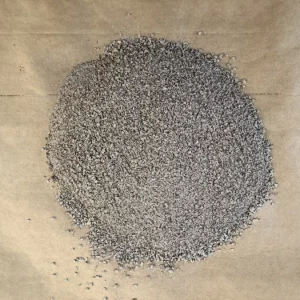How do refractory coatings protect refractory linings from chemical attack and erosion?
Refractory coatings are used to protect refractory linings from chemical attack and erosion in high-temperature industrial applications. These coatings provide a layer of protection on top of the refractory lining, which helps to extend the lifespan of the lining and improve its resistance to chemical attack and erosion.
Refractory coatings work by creating a barrier between the refractory lining and the harsh environment in which it operates. The coating material is chosen to be compatible with the refractory lining and the chemical environment it will be exposed to. Typical coating materials may include various types of ceramic or metallic compounds.
The coating is applied to the surface of the refractory lining using a spray gun or other application method. Once applied, the coating dries and cures to form a hard, protective layer on top of the refractory lining. This layer provides resistance to chemical attack and erosion by preventing the chemicals or abrasive materials from coming into contact with the refractory lining directly.
In addition to providing protection against chemical attack and erosion, refractory coatings can also improve the overall thermal performance of the refractory lining. By reducing the amount of heat that is lost from the lining, the coating helps to maintain the temperature inside the equipment, which can improve efficiency and reduce energy costs.
Overall, refractory coatings are an effective way to protect refractory linings from chemical attack and erosion in high-temperature industrial applications. They can extend the lifespan of the refractory lining and improve the safety and efficiency of industrial equipment.
How does the coating improve the thermal performance of the refractory lining?
Refractory coatings can improve the thermal performance of refractory linings in several ways.
Here are some ways in which the coating can help:
Thermal insulation: Refractory coatings can provide an additional layer of thermal insulation on top of the refractory lining. This insulation layer can help to reduce heat loss from the equipment and maintain higher temperatures inside the furnace or kiln.
Reflectivity: Some refractory coatings are designed to have a highly reflective surface. This reflectivity can help to redirect heat back into the furnace or kiln, rather than allowing it to escape through the refractory lining.
Emissivity: Refractory coatings can also be designed to have a low emissivity, which means that they emit less thermal radiation. This can help to reduce the amount of heat lost through radiation from the refractory lining.
Resistance to thermal shock: Refractory coatings can also help to improve the resistance of the refractory lining to thermal shock. Thermal shock is the rapid expansion or contraction of the lining due to changes in temperature, which can cause the lining to crack or break. By providing an additional layer of protection, the coating can help to absorb some of the thermal shock and reduce the risk of damage to the refractory lining.
Overall, the use of refractory coatings can help to improve the thermal performance of refractory linings and help to maintain higher temperatures inside the equipment. This can improve the efficiency of the industrial process and reduce energy costs.

